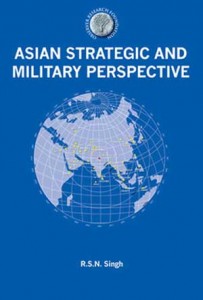After partition, Pakistan did not inherit any military production facilities. In 1951, the Pakistan Ordnance Factory was established at Wah cantonment to produce small arms, ammunition and explosives. After 1965, Pakistan, apart from shifting its overwhelming arms supplies reliance from the US to China and other western countries like France; also began to concentrate on expanding its defence production facilities. In this, it received effusive assistance from China.
The Heavy Industries facility in Taxila was established in 1971. In 1973, the Pakistan Aeronautical Complex (PAC) was established at Kamra, (north of Islamabad), which began to assemble F-6 and French Mirages. Pakistan also indigenously produces ‘Mushak’ trainer aircraft. The PAC is planning to assemble the Chinese-developed JF-17 lightweight fighters from 2005, as also K-8 Karakorum advanced jet trainers for the PAF and potential export customers. The PAC’s contribution in the manufacturing of the K-8 aircraft project is believed to be about 20 percent. Nevertheless, the PAC aims to have 50 percent of the export share in the number of JF-17 and K-8 aircraft sold outside China.
Pakistan has achieved self-sufficiency in small arms and is well on its way to attain the same capability with regard to all types of tank and artillery ammunition
In 1989, a contract was signed with General Dynamics Land Systems, USA for the establishment of an overhauling facility at Taxila for M-47 / M-48 tanks, M-109 and M-110 self-propelled guns, and M-113 series of APCs. An engine re-build plant with a capability of overhauling 100 engines each of Type-59 and 69 tanks was also established. With this expansion, the Heavy Rebuild Factory was renamed as Heavy Defence Industries, Taxila. During the IDEAS-2000 Defence Exhibition held at Karachi, Heavy Industries, Taxila (HIT) demonstrated its indigenously produced Main Battle Tank (MBT) Al-Khalid and Al Zarrar tank (modified and upgraded T-59 tank).
Unmanned Aerial Vehicle (UAV), and ANZA (shoulder fired surface-to-air missile) and Baktar Shikan anti-tank missiles (range 3,000 metres) — all produced by AQ Khan Research Laboratory — were also on display. HIT also displayed the indigenously built Armoured Personnel Carrier (APC) ‘Talah’, and Command Post Vehicle ‘Sakb’. HIT produces Chinese T-85 II-AP tanks under licence. The Kahuta based AQ Khan Research Laboratory has developed an upgrade kit for the Chinese supplied Twin-37 mm light anti-aircraft guns. It also has begun to produce 122mm T-83 (Azar) Multiple Rocket System with a range of 13,400 metres. Pakistan has achieved self-sufficiency in small arms and is well on its way to attain the same capability with regard to all types of tank and artillery ammunition.
The Karachi Shipyard and Engineering Works (KSEW) was established in 1957 and undertakes construction of passenger vessels, cargo vessels, oil carriers, bulk carriers etc. It has also been successful in producing mine hunters (length 47-metres, speed 14-knots), patrol boats (length 39-metres, speed 23-knots), 200-tonne missile craft (speed 25-knots), and floating docks up to 4,000-tonne lifting capacity.
Over 200 defence items including missiles (anti-tank and surface-to-air), tanks, artillery guns and spare parts are being exported to more than 21 targeted countries”¦
The KSEW offers these vessels on sale, however, due to lack of orders, the organisation is believed to be under great financial stress. The Pak Naval Dockyard under the Ministry of Defence also undertakes construction, repair and maintenance of vessels exclusively for the Pak Navy. It can build warships of up to 5,000 tonne.
Over 200 defence items including missiles (anti-tank and surface-to-air), tanks, artillery guns and spare parts are being exported to more than 21 targeted countries including Malaysia, Indonesia, Thailand, Turkey, Iran, Saudi Arabia, Morocco, Libya, Mauritius, and India’s neighbours like Bangladesh, Sri Lanka, and Myanmar. It has also been trying to create a market for defence products in Nepal. Pakistan’s defence exports amounted to US $ 130 million in 2003 and the Defence Export Promotion Organisation (DEPO) has set a target of US $ one billion for the next 8 to 10 years.
 It has already begun to offer its Al-Khalid and Al-Zarrar tanks to Bangladesh and Thailand. Its defence supplies to Sri Lanka are substantial and constitute artillery and small arms ammunition, MRLs, UAVs, and aircraft ammunition. The PAC, Kamra is also providing repair and maintenance of F-6 aircraft of the Sri Lanka Air Force. It has supplied items like artillery guns and ammunition, 81mm mortars and ammunition, and spares of K-8 aircraft to Myanmar. It has made inroads into the Malaysian arms market with the supply of Baktar Shikan ATGMs and Anza surface-to-air missiles.
It has already begun to offer its Al-Khalid and Al-Zarrar tanks to Bangladesh and Thailand. Its defence supplies to Sri Lanka are substantial and constitute artillery and small arms ammunition, MRLs, UAVs, and aircraft ammunition. The PAC, Kamra is also providing repair and maintenance of F-6 aircraft of the Sri Lanka Air Force. It has supplied items like artillery guns and ammunition, 81mm mortars and ammunition, and spares of K-8 aircraft to Myanmar. It has made inroads into the Malaysian arms market with the supply of Baktar Shikan ATGMs and Anza surface-to-air missiles.





The Pakistani’s thought about the strategic importance of having a Defence industry that was capable of providing them with arms and also with export dollars. China no doubt influenced the Pakistani’s and also they are ensuring there is an industrial base in place for Pakistan.
Where as Indians despite having the capability, the political masters never encouraged such strategic planning, we were too busy ensuring kickbacks. Indian could learn a lot and I know Modi is well aware of the strategic importance of having a strong industrial base and a Defence industry. We need to be self reliant and have a strong base in place to build capability and have spin offs for civilian use as well.
There are many unresolved issues that have left India strategically venerable and Defence production is one of the areas. We have a lot of catching up to do.